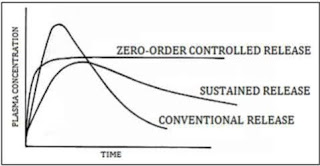The function of the cellular organelle
The function of the cellular organelle:
Functions of Mitochondria:
2. The simpler molecules of nutrition are sent to the mitochondria to be processed and to produce charged molecules. These charged molecules combine with oxygen and produce ATP molecules. This process is known as oxidative phosphorylation.
3. Mitochondria may also produce heat (brown fat), and accumulate iron-containing pigments (Heme ferritin), ions of Ca2+ and HPO42– (or phosphate; e.g., osteoblasts of bones or yolk proteins).
4.Mitochondria help the cells to maintain the proper concentration of calcium ions within the compartments of the cell.
5.The mitochondria also help in building certain parts of blood and hormones like testosterone and estrogen.
6.The liver cell’s mitochondria have enzymes that detoxify ammonia.
7.The mitochondria also play an important role in the process of apoptosis or programmed cell death.
Abnormal death of cells due to the dysfunction of mitochondria can affect the function of an organ.
Functions of Ribosomes
1.They assemble amino acids to form specific proteins, proteins are essential to carry out cellular activities.
2.The process of production of proteins, the deoxyribonucleic acid produces mRNA by the process of DNA transcription.
3.The genetic message from the mRNA is translated into proteins during DNA translation.
4.The sequences of protein assembly during protein synthesis are specified in the mRNA.
5.The mRNA is synthesized in the nucleus and is transported to the cytoplasm for further process of protein synthesis.
6.In the cytoplasm, the two subunits of ribosomes are bound around the polymers of mRNA; proteins are then synthesized with the help of transfer RNA.
7.The proteins that are synthesized by the ribosomes present in the cytoplasm are used in the cytoplasm itself. The proteins produced by the bound ribosomes are transported outside the cell.
Endoplasmic Reticulum Function
As stated above, the endoplasmic reticulum is categorised into two types, and both these types of ER perform specific functions:
Smooth Endoplasmic Reticulum Function:
1.Smooth ER is responsible for the synthesis of essential lipids such as phospholipids and cholesterol.
2.Smooth ER is also responsible for the production and secretion of steroid hormones.
3.It is also responsible for the metabolism of carbohydrates.
4.The smooth ER store and release calcium ions. These are quite important for the nervous system and muscular system.
Rough Endoplasmic Reticulum Function:
1.The majority of the functions of rough ER is associated with protein synthesis.
2.Rough endoplasmic reticulum also plays a vital role in protein folding.
Also ensures quality control (regarding correct protein folding).
3.The second most important function after protein synthesis and protein folding is protein sorting.
Functions of Golgi complex
1.The vital function of the Golgi apparatus is packaging and secretion of proteins.
2.It receives proteins from Endoplasmic Reticulum.
3.It packages it into membrane-bound vesicles, which are then transported to various destinations, such as lysosomes, plasma membrane or secretion.
4.They also take part in the transport of lipids and the formation of lysosomes.
5. Post-translational modification and enzymatic processing occur near the membrane surface in Golgi bodies, e.g. phosphorylation, glycosylation, etc.
6. Golgi apparatus is the site for the synthesis of various glycolipids, sphingomyelin, etc.
7.Complex polysaccharides of the cell wall are synthesised in the Golgi apparatus in plant cells.
Functions of Lysosomes
Lysosomes serve two major functions:
Intracellular Digestion
1.To digest food, the lysosome membrane fuses with the membrane of food vacuole and squirts the enzymes inside.
2.The digested food then diffuses through the vacuole membrane and enters the cell to be used for energy and growth.
Autolytic Action
1.Cell organelles that need to be get ridden are covered by vesicles or vacuoles by the process of autophagy to form autophagosome.
2.The autophagosome is then destroyed by the action of lysosomal enzymes.
3.Processes in which lysosomes play crucial roles include:
a. Heterophagy
The taking into the cell of exogenous material by phagocytosis or pinocytosis and the digestion of the ingested material after fusion of the newly formed vacuole with a lysosome.
b. Autophagy
A normal physiological process that deals with the destruction of cells in the body. It is essential for maintaining homeostasis, for normal functioning by protein degradation, turnover of destroyed cell organelles for new cell formation
c. Extracellular Digestion
Primary lysosomes secrete hydrolases outside by exocytosis resulting in degradation of extracellular materials.
Eg. Saprophytic fungi
d. Autolysis
It refers to the killing of an entire set of cells by the breakdown of the lysosomal membrane. It occurs during amphibian and insect metamorphosis.
e. Fertilization
The acrosome of the sperm head is a giant lysosome that ruptures and releases enzymes on the surface of the egg. This provides the way for sperm entry into the egg by digesting the egg membrane.
f. As Janitors of the Cell
Lysosomes remove ‘junk’ that may accumulate in the cell helping to prevent diseases.
Nucleolus Function
The nucleolus is considered as the brain of the nucleus, covering nearly 25% volume of the nucleus. Primarily, it takes part in the production of subunits that unites to form ribosomes. Hence, nucleolus plays an important role in the synthesis of proteins and in the production of ribosomes in eukaryotic cells.
The Function of Chromatin
DNA Packaging
This is the most fundamental function of chromatin: compactification of long DNA strands.The length of DNA in the nucleus is far greater than the size of the compartment in which it is stored. To fit into this compartment the DNA has to be condensed in some manner. Packing ratio is used to describe the degree to which DNA is condensed. To achieve the overall packing ratio, DNA is not packaged directly into structure of chromatin. Instead, it contains several hierarchies of organization.
The first level of packing is achieved by the winding of DNA around the nucleosome, which gives a packing ratio of about 6. This structure is invariant in both the euchromatin and heterochromatin of all chromosomes. The second level of packing is the wrapping of beads in a 30 nm fiber that is found in both interphase chromatin and mitotic chromosomes. This structure increases the packing ratio to about 40. The final packaging occurs when the fiber is organized in loops, scaffolds and domains that give a final packing ratio of about 1,000 in interphase chromatin and about 10,000 in mitotic chromosomes.
Transcription Regulation
Transcription is a process in which the genetic information stored in DNA is read by proteins and then transcribed into RNA, and the RNA will later be translated into functional proteins. If the chromatin gets strengthened and restricts access to the read proteins, there are no transcription occurs. Euchromatin, an extended type of chromatin, can conduct the process of transcription. While heterochromatin, the condensed type of chromatin, is packed too tightly for DNA to be read by proteins.
Fluctuations between open and closed chromatin may contribute to the discontinuity of transcription, or transcriptional bursting. Other factors may probably be involved, such as the association and dissociation of transcription factor complexes with chromatin. The phenomenon, as opposed to simple probabilistic models of transcription, can account for the high variability in gene expression occurring between cells in isogenic population
Chromatin and DNA Repair
The packaging of DNA into the chromatin presents a barrier to all DNA-based processes. Due to the high dynamic arrangement of proteins and DNA, chromatin can readily change its shape and structure. Chromatin relaxation occurs rapidly at the site of a DNA damage, which allows the repair proteins to bind to DNA and repair it.




Comments
Post a Comment
Thanks